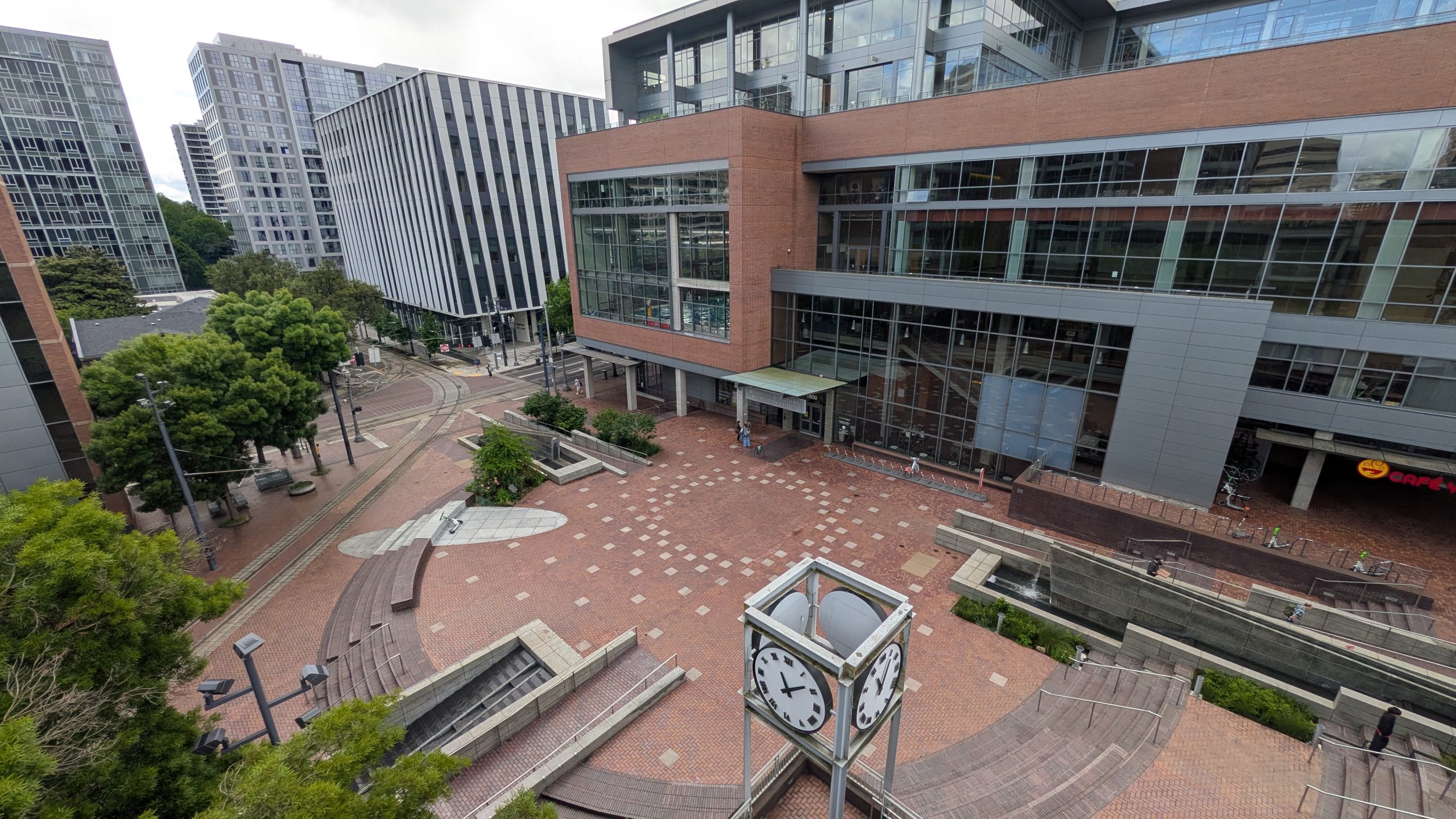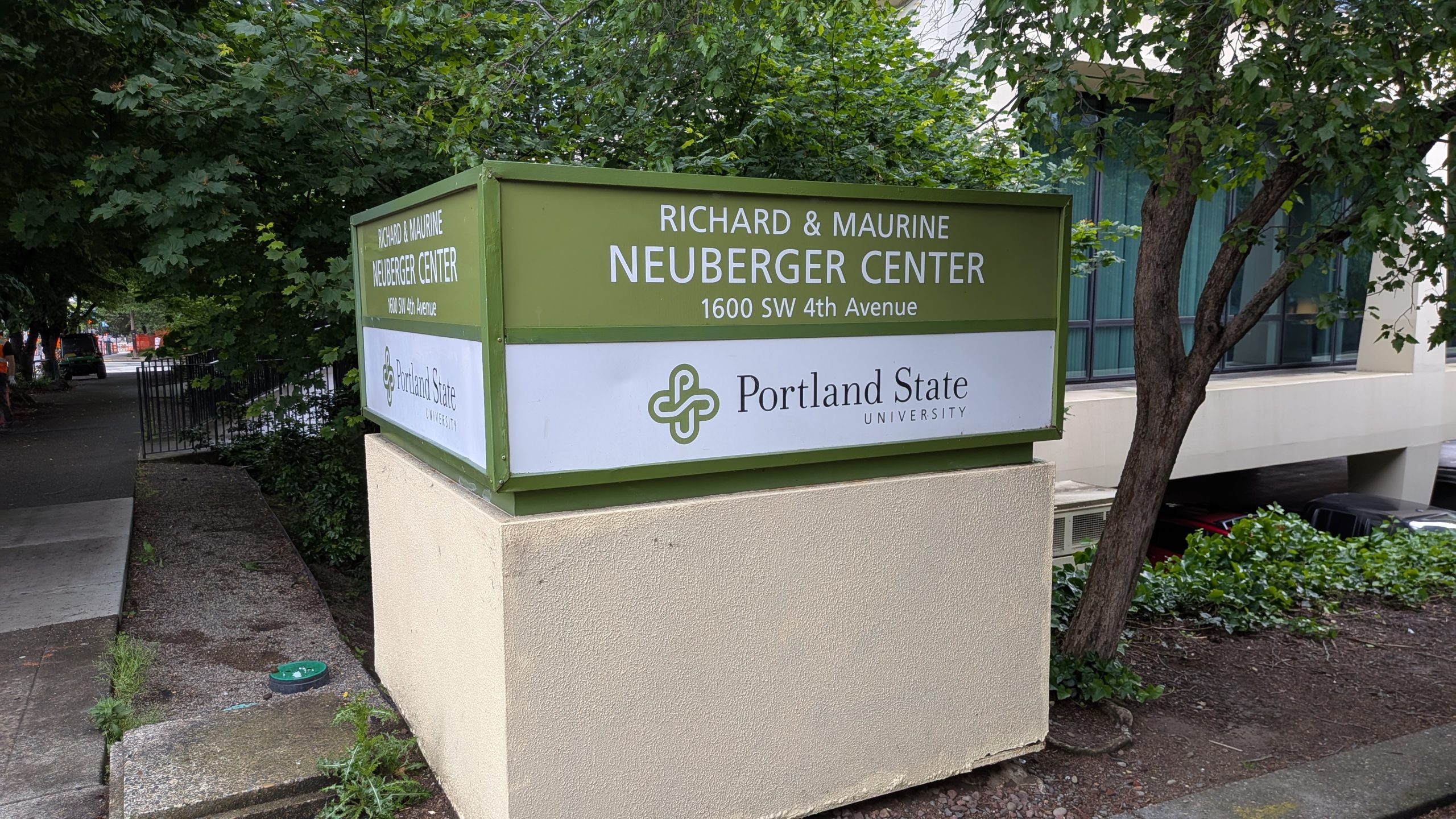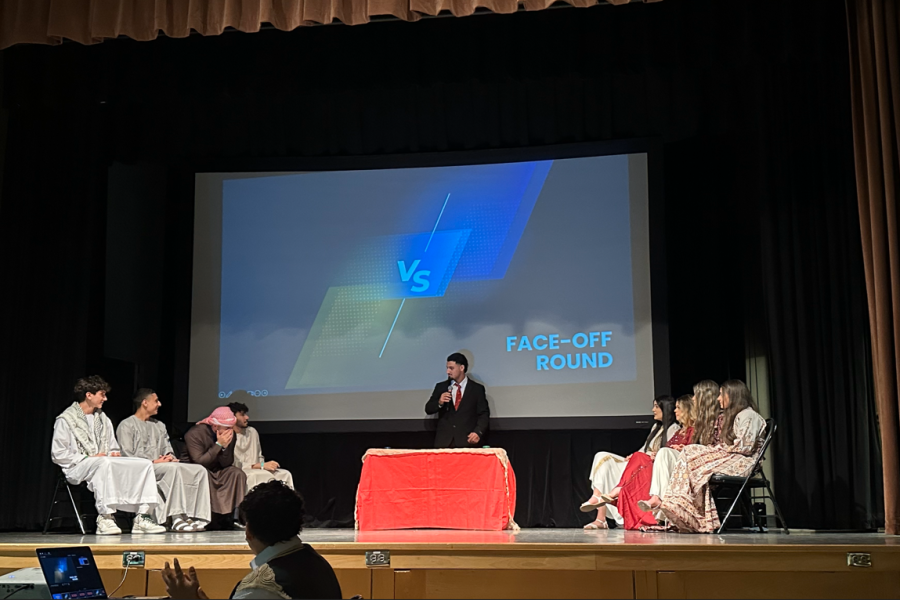On Apr. 4, the Portland State University (PSU) Board of Trustees (BOT) voted to increase tuition by approximately 5% next academic year. When presenting to the BOT on the proposed increase, PSU Vice President of Finance & Administration Andria Johnson claimed a majority of the campus approved of a tuition increase when surveyed. However, Johnson faced criticism from board members when it was revealed the presented results were primarily based on the input of staff, with few faculty responses and almost zero student input.
“We always like to get campus feedback before we bring a tuition proposal to you,” Johnson said, while presenting to the Finance and Administration Committee on Apr. 3. “In March, we did hold a university-wide budget forum, and we asked the participants a couple of questions… In that survey, over 70% of the respondents did support a 5% or greater tuition increase.”
This same slide also presented on the importance of transparency from administration, referencing this as one of the most significant concerns raised during campus feedback efforts.
“Our campus community wants even greater transparency,” Johnson said. “I think they would like to see us follow through with the goals in our Strategic Plan, and… many are ready for us to make some difficult decisions that will address our budget constraints. That was clear in their commentary.”
After this statement, BOT Chair Benjamin Berry asked Johnson to clarify if these results were based on student input.
“This was mostly staff,” Johnson said in response. “This was open to anybody. There were faculty members that attended and filled out the service, too. But I would say the majority of the respondents to this particular survey were staff members.”
Following this, Student Trustee AJ Romero-Gemmell questioned Johnson on how many of the respondents were students.
“I think there were not many students,” Johnson said in response.
Romero-Gemmell further pressed Johnson for a specific number, to which she consulted notes with a colleague.
After which, Johnson said, “Just one.”
Later on in the meeting during the discussion portion, Romero-Gemmell made a comment referencing this interaction.
“How we communicate and work with the community at large is really important,” Romero-Gemmell said. “And to be honest, looking at slide 20… seeing [it titled] ‘Campus Feedback,’ and knowing… only one of them was a student… [that] is quite infuriating and enraging as a student and as a board member… Disheartening and disgusting to be honest.”
In an interview with PSU Vanguard, Johnson addressed the concerns regarding the legitimacy of the survey results.
“I think it was an accurate reflection of the data that was collected,” Johnson said. “I think it could have been worded differently. I think I could have shared additional information about who responded to the survey. But it was definitely an accurate representation of those that did respond to the survey.”
Johnson noted that the next slide in the presentation focused on remarks from the Tuition Review Advisory Committee (TRAC), which had conducted their own survey of campus feedback on three possible tuition increases. That survey had a more diverse pool of responses. Out of 95 responses, 49 were students. However, the results of that survey were not listed on the presentation slides, and instead, were stated verbally during a slide labeled, “Tuition Proposal Remarks From the Tuition Review Advisory Committee (TRAC).”
When this incident was brought up at the BOT meeting the next day on Apr. 4, Johnson once again defended their position by referencing this second survey conducted by TRAC.
“I just want to remind you that that was one survey that we did,” Johnson said. “There was, in fact, a survey that was directly aimed at students that went out in the Virtual Viking that was written by the Tuition Review Advisory Committee (TRAC). And while those responses were not on that particular slide, that one did receive more student input, and it was virtually the same… in aggregate, I should say, the same type of responses.”
The more diverse survey conducted by TRAC saw around 42% in favor of increasing the tuition by 5%, in contrast with the 70% from the staff-heavy survey.
“Similar results in the sense that… folks understood the need for a tuition increase…” Johnson said. “What the student members and TRAC learned was… 5% is something that we can support.”
Johnson was then asked why the slideshow presented the findings of the first survey and omitted the results of the TRAC one.
“I mean, sure…” Johnson said in response. “I could have changed up the wording to have it be a little bit different there… I’ll just leave it at that.”
At the BOT meeting, Johnson cited difficulties in gathering student input on issues related to budget and finance, claiming low engagement hampered their ability to obtain comprehensive feedback.
“I also welcome, from any of you, any ways to actually get our students involved,” Johnson said. “We have people that say they’re going to sign up for TRAC, and then they don’t show up. We have tried forums in the past directly aimed at students. We’ve tried working with ASPSU, and I really appreciate their push on that as well, but honestly, it doesn’t seem to be something that our students want to participate in.”
Other board members voiced concern over the university’s inability to gather campus feedback, expressing a desire to improve on this subject.
“We’re a research institution, and so why are we talking about a survey in this way, representing it as if it has true input from students, if there really was only one student…” Trustee Marissa Madrigal said. “I mean, I think that that is a legitimate and valid criticism of that statistic, and it does undermine our relationship with the community.”
When asked why tuition needed to be raised in the midst of program cuts and faculty layoffs, Johnson cited rising costs as well as several unforeseen financial impacts.
“It costs us more tomorrow to do what we’re doing today,” Johnson said. “In the case of a university and in particular, Portland State University, 80% of our Education & General fund costs are people… We want to give our folks raises, and the people that work at Portland State are incredible folks that work really hard and deserve to see some salary increases to help with the costs… of living.”
Johnson also mentioned an unexpected increase in the university’s obligations to the Public Employees Retirement System (PERS)—a state program that allocates funds for retiring employees. The amount of money the university needs to pay toward the PERS is set by the State of Oregon. According to Johnson, PSU was surprised to learn its costs had increased by 9%—a factor the university had not accounted for.
Another unexpected change to the university’s cost came in the amount they were expecting from a critical source of money, the Public University Support Fund. While the support other Oregon universities receive has either remained flat or increased, PSU’s share has been in a consistent state of decline due to falling enrollment.
“I don’t know why [resident] students are choosing to attend… other universities. I can say… The students from California or other states are choosing not to come to OSU and UO, that makes more slots available for resident students that would have otherwise been turned away and might have come to PSU,” Johnson said.
On whether or not students can expect continuing tuition increases in the following years, Johnson said this was likely.
“I suspect that we will have tuition increases, just as we will have cost increases,” Johnson said. “I can’t speculate on how large they’ll be… One of the mechanisms that we have for covering increasing costs is tuition increases.”
Other board members expressed worries over the long-term viability of tuition increases and program cuts as a means to combat the university’s ongoing financial crisis.
“This can work for a bit, but it is unsustainable…” Trustee Gregory Hinckley said. “What we have to do is find out a way… How do we grow credit hours? How do we increase students?”
Faculty Trustee Vicki Reitenauer voiced similar concerns.
“We should really be thinking about the kind of cuts that work directly against retaining students, and that’s what we’re pursuing,” Reitenauer said.
Following the discussion, all Trustees voted yes to raising the tuition, with the exception of the two student representatives on the board, who both voted no.
The total tuition and fee increase will be kept below 5%, which is the maximum amount the university can raise tuition without state approval. A majority of undergraduate students in the Tuition Free Degree program will not be affected. The estimated increase per term for resident undergraduates is $182, and $305 for resident graduates. More information can be found in the slide deck for the Apr. 3 BOT meeting.







